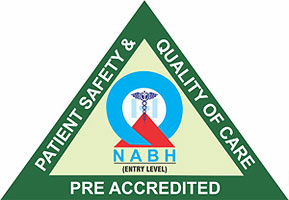+91-7291089674 (Bandra)
+91-7291092120 (Kandivali)




December 23, 2020 | Author: Admin
Cataract is common eye defect affecting majority of population and yes, it can lead to blindness if timely treatment is not done. Most of the affected people are above 40 years of age and rarely it is seen in young people. However due to some eye injury or congenital issues, it can affect people with younger age group as well. But good news is that cataract is treatable.
Our eye works like a camera and an image is formed, when light passes through the lens and is focused on the retina, which acts like a screen and the nerve present in the retina passes the information to the brain and is perceived as an object seen through our eyes. Now consider a scenario, in which the lens is foggy and you are unable to take the picture clearly, and that is what happens in a patient with a cataract. With age, cataract affects one or both eyes at different time interval.
Clumping of proteins present in the lens forms a dot like structure in its central back portion. This causes obstruction of the image and leads to various eye symptoms like:
At young age, it is difficult to notice cataract effects, but by 60 to 70 years of age, cataract changes are visible enough but are still ignored by some people. If cataract is left untreated for a long period, it causes irreversible damage to eyesight.
When you visit your eye doctor, he examines for clarity of vision, function of eye muscles and pupil reaction in the eye. Not all cases of cataract need immediate surgery as cataracts are of various types and need to be treated accordingly.
Congenital cataract – In case of new born and young children affected with cataract, genetic or intrauterine infection play an important causative factor. These kind of cases should be treated immediately upon detection.
Nuclear cataracts – It is usually slow and patients sometime notice improved reading vision. However it is a temporary effect. Gradually with time the color of the lens changes to yellow or brown and vision reduces for both far and near.
Cortical cataracts – It usually starts on the outer edge of the lens cortex as a streak of opacity and elongates to the center blocking the light passing through the lens through its center.
Posterior Sub capsular cataracts – It is a faster variant and is manifested as a small opaque area on the back of the lens and interferes with the path of light. It reduces vision in bright light and causes glare and or halos around lights at night.
Every individual case is different and few cases show that both eyes cataract of a patient may be at a different stage, so one eye may need surgery right away and other eye might need surgery at a later date. Some patients wait for the condition to reach at the verge of losing eye sight and then go for the cataract surgery which may predispose to complications.
Hence, it is recommended that if you want to enjoy reading, watching television and other daily activities without problems, visit an eye doctor regularly to check for development of cataract and its timely treatment.
After diagnosing eye problems, patient is advised for eye glasses, contact lenses, surgery and medication, depending on the stage of the issue. With the recent advances and laser assisted surgeries, cataract surgery is one of the most common eye care procedures, and has become a fast and painless procedure. Patient is awake during the whole procedure and is very comfortable during the treatment with faster recovery.
Cataract surgery involves a key hole opening made and the clouded lens is replaced with an artificial intra ocular lens. Artificial lens is either a monofocal or a multi bifocal or Trifocal one. During the surgery patient is given topical or local anaesthesia and after the procedure patient can go home immediately on the same day. It is a daycare procedure. Most of the patients experience an improved vision within the first 24-48 hours, while few cases show improved vision within a weeks time.
Treatment outcome is always good when the patient is treated at early stages. Early diagnosis and treatment not only gives better results but also prevents patient from developing diseases like squint and glaucoma.
To schedule an appointment with one of our experts or to know more about our various corrective and treatment modalities, feel free to contact us at +91 22 61549999 or visit our clinic at Roseland Building, Junction of Linking Road and Waterfield Road, Bandra, Mumbai- 400050. India.